
-
Find the right food for your petTake this quiz to see which food may be the best for your furry friend.Find the right food for your petTake this quiz to see which food may be the best for your furry friend.Featured products
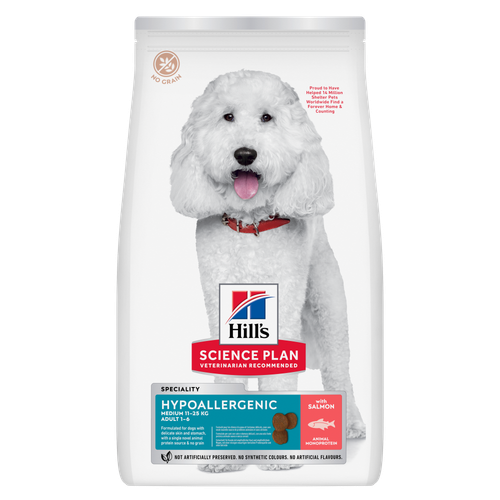 Hypoallergenic Medium Adult Dog Food
Hypoallergenic Medium Adult Dog FoodScience Plan Hypoallergenic Medium Adult dog food with Salmon is a gentle, science-led formula crafted for dogs with food sensitivities. Made with carefully selected, high-quality novel proteins and no grains, it’s tailored to minimise common triggers that can lead to skin and digestive discomfort.
Shop Now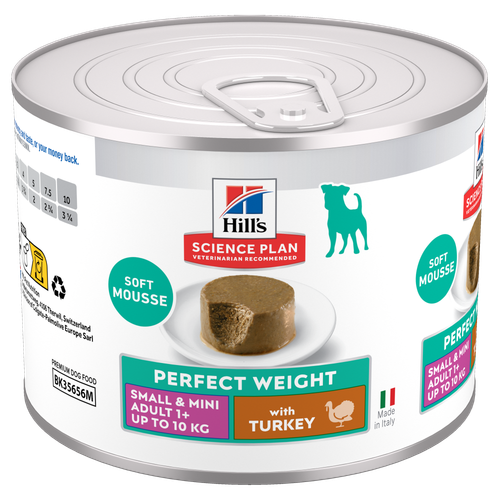 Perfect Weight Small & Mini Adult Dog Food
Perfect Weight Small & Mini Adult Dog FoodHill's Science Plan Adult Small & Mini Dog Food with Turkey is a complete premium pet food for adult small dogs from 1 year old that are prone to weight gain or slightly overweight. This deliciously smooth mousse is formulated to deliver the appropriate amount of energy to support weight maintenance in adult dogs.
Shop Now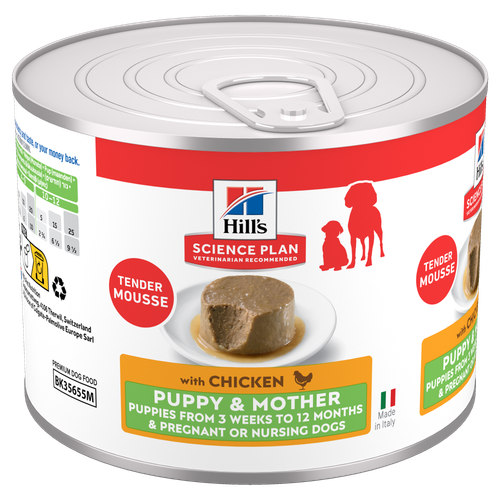 Puppy & Mother Tender Mousse Dog Food
Puppy & Mother Tender Mousse Dog FoodHill's Science Plan Puppy & Mother Tender Mousse Dog Food with Chicken is a complete premium pet food for puppies and pregnant or nursing dogs. Formulated with chicken and other specially selected ingredients, including minerals and antioxidants to support gut health and optimal growth, it comes in a soft mousse texture they'll love.
Shop NowFeatured products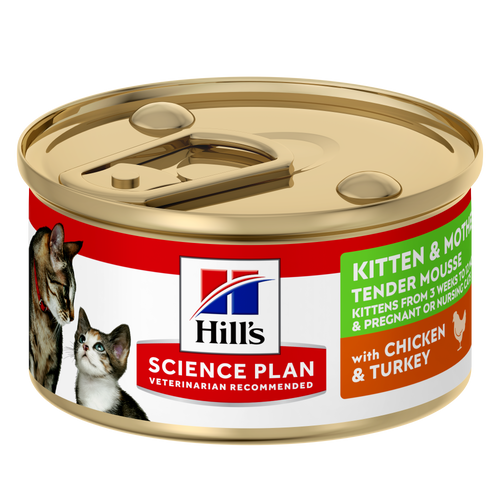 Kitten & Mother Tender Mousse Cat Food
Kitten & Mother Tender Mousse Cat FoodHill's Science Plan Kitten & Mother Tender Mousse Cat Food with Chicken & Turkey is a complete premium pet food for kittens from weaning until 1 year old and for pregnant and nursing cats. Formulated with chicken, turkey and other specially selected ingredients to support gut health and optimal growth. It comes in a soft mousse texture they'll love.
Shop Now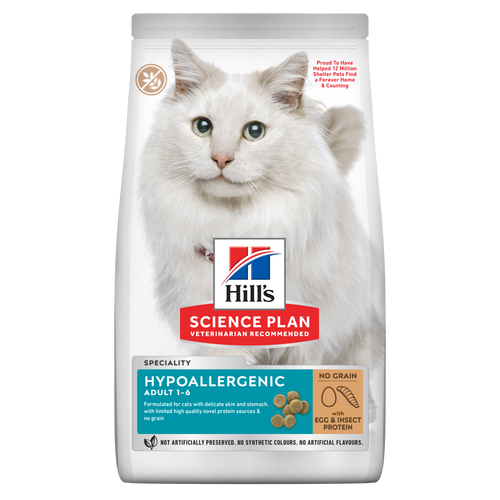 Hypoallergenic Dry Cat Food
Hypoallergenic Dry Cat FoodHILL'S SCIENCE PLAN Hypoallergenic Adult cat food with egg & insect protein is a complete pet food for adult cat 1–6 years old. It's formulated for cats with delicate skin and stomach, with limited high quality novel protein sources & no grain.
Shop Now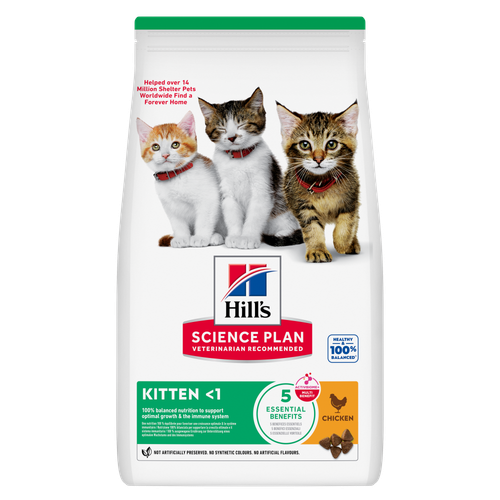 Kitten Food
Kitten FoodHill's Science Plan Sterilised Kitten Cat Food with Chicken is specially formulated with ActivBiome+ Multi-Benefit Technology. This food is carefully formulated for the developmental needs of kittens, so they get the best start in life & grow to their full potential.
Shop Now -
Dog
- Dog Tips & Articles
-
Health Category
- Weight
- Food & Environmental Sensitivities
- Urinary
- Digestive
- Joint
- Kidney
-
Life Stage
- Puppy Nutrition
- Adult Nutrition
- Senior Nutrition
Cat- Cat Tips & Articles
-
Health Category
- Weight
- Skin & Food Sensitivities
- Urinary
- Digestive
- Kidney
-
Life Stage
- Kitten Nutrition
- Adult Nutrition
Featured articles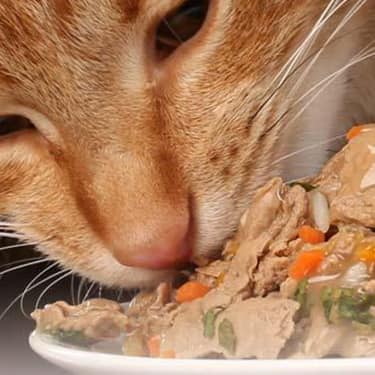 Tips For Mixing Wet And Dry Pet Food
Tips For Mixing Wet And Dry Pet FoodDiscover tips for mixing wet and dry pet food to ensure balanced nutrition and variety for your pet. For comprehensive feeding advice, visit Hill's Pet UK.
Read MoreTips for Working From Home With a PetGet helpful information on how to get all of your work done while keeping your dog or cat entertained when working from home.
Read More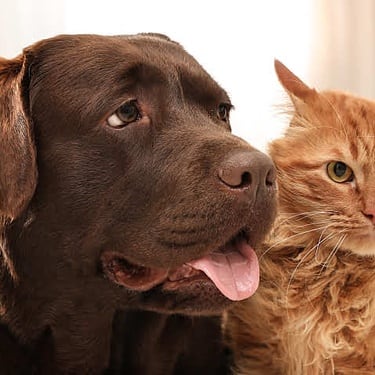 What Cleaning Products Are Safe for Pets?
What Cleaning Products Are Safe for Pets?Learn which cleaning product ingredients can be hazardous for dogs & cats, which alternatives are safer and tips for using cleaning products around pets.
Read More -


When you first adopted your pet, you knew you'd do anything to protect him and take care of him. Through the years, you've brought him to the veterinarian for annual checkups, the dog park for socialization and even vacations. He's been a healthy pal for years, and you never imagined a day would come when the vet would have to tell you about hearing loss in dogs. But, here you are. It's time to relearn how to communicate with and keep your deaf dog safe.
Deafness in dogs can happen at any time, but it is most apparent when your dog stops reacting to common events: the doorbell ringing, the sound of you pouring his food for breakfast or calling his name to come. While deafness can be a hard thing to think about in your dog, it doesn't mean he can't still live a high-quality life and do all of the things that other dogs do, or even the things he used to do. It just means a change in approach to how you care for him, now cognizant of his hearing disability.
Common Causes of Deafness in Dogs
According to the book Deafness in Dogs and Cats by George Strain, congenital deafness is when a dog is born without hearing. There are many ways dogs can become deaf over time. Old age is one reason dogs begin to lose hearing. Another cause of deafness or hearing loss in dogs is trauma to the ear or chronic ear infections. Finally, toxicity from drugs or chemicals can cause dogs to go deaf.
There are breeds that are more susceptible to being born without hearing or becoming deaf over time. Strain, a professor of neuroscience and a leading veterinary researcher at the School of Veterinary Medicine at Louisiana State University, has identified 100 breeds that have experienced congenital deafness, with some breeds being much more likely to be born deaf. Interestingly, Strain says that dogs with white pigmentation may be more susceptible. According to the book The Genetic Connection: A Guide to Health Problems in Purebred Dogs by Lowell J. Ackerman, Dalmatians have a very high congenital deafness rate.
How to Test Your Dog's Hearing
To check your dog's hearing, stand behind him when he is either sleeping or looking in a completely different direction. Make sure that your dog is unaware of your presence. He should not be able to see you or feel your movements (so don't walk heavily on the floor near him) and then make a loud sound. Does your dog acknowledge hearing it? Does he perk up his ears or turn around?
If not, schedule a visit to the to get his hearing checked. If your dog heard your loud noise, but you are concerned that he might still have some hearing loss, try making sounds at different sound ranges. Hit a pan to test low-range noises. Clap your hands loudly for a middle-range sound, and blow a whistle to test high-range noises.


Tasty Tips
How to Prevent Hearing Loss in Dogs
Keeping your dog at optimal health is important to slow the progression of hearing loss. You've always provided healthy meals and snacks for your pet, and it's important to continue feeding him a nutritious food if he loses his hearing. Make sure your pet's food is made of high-quality, balanced ingredients, and that he's hydrating with water throughout the day.
Also, keeping your dog's ears clean will reduce his chance for hearing loss. However, just as you must be careful when cleaning your own ears, be cautious with your dog's. Do not clean your dog's ears until you've been shown how to do so by the vet. Then, practice in the vet's office. Once you've been given the go ahead, make ear cleaning a routine in your home.
Much like human's it is also a good idea to keep your dog away from loud noises that could damage his hearing. Dog's ears are much more sensitive and therefor loud noises are a greater risk to your pup's hearing. If you have loud music, or band practice in your house, make sure to keep your pooch in a separate room. If you are celebrating a holiday with fireworks, keep him inside to not only reduce fear, but also limit his ears' exposure to the loud booms.
Changes to Your Dog's Environment
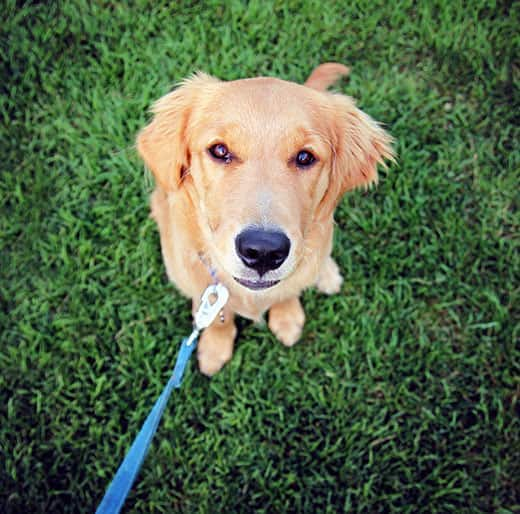 If your dog loses his hearing, the first thing you need to do is learn a new way to communicate with each other. For slowly progressing hearing loss, work on incorporating hand signals into any verbal training commands. Sudden deafness requires a more intensive hand-training program. Whatever you do, don't get discouraged. If your dog was well-trained before the hearing loss, he'll quickly come around to any new training. The lack of hearing is something he'll simply need time to get used to, just as you will. Stick with it, and work through it together.
If your dog loses his hearing, the first thing you need to do is learn a new way to communicate with each other. For slowly progressing hearing loss, work on incorporating hand signals into any verbal training commands. Sudden deafness requires a more intensive hand-training program. Whatever you do, don't get discouraged. If your dog was well-trained before the hearing loss, he'll quickly come around to any new training. The lack of hearing is something he'll simply need time to get used to, just as you will. Stick with it, and work through it together.
A dog without hearing cannot be allowed to roam on his own. If your dog suddenly — or slowly — loses his hearing, make sure he is leashed at all times. If you have a yard that your dog spends time in, keep him on a lead or put up a fence to give him some freedom in a safe environment. When leaving your property, keep your dog leashed.
Besides a leash and collar, your dog also needs updated identification tags. Get one with your contact information, and another that clearly indicates that your dog is deaf. If you're at all worried about knowing where your dog is, consider getting a collar with a bell attached. Having your dog microchipped is also a consideration.
There are some indicators you can use to help your dog with daily activities, too. In the evening, lights can be used to get your dog's attention. A flashlight can be shined in the yard when it's time to come inside for the evening. Room overhead lights can be turned off, on and then off again to alert a dog that the family is going to bed. Also, don't forget about your dog's strong sense of smell. Using various smells with your training will help him register your command with the certain smell.
Adaptions to Your Dog's Routines
Your dog will startle easily when deaf, as he is unable to hear people and other dogs approach. Training can help soften your dog's startle reflex. Treat training with healthy morsels is especially motivating for your pet. Start by approaching your dog from different areas and presenting him with a treat when you come close. Next, wake your dog (a situation that will make him extra startled) but be sure to do so gently, and immediately share a treat. A smart way to wake a deaf dog is by walking loudly (so that he can feel your movements approaching) on the floor near him or gently tapping his sleeping quarters.
Adopting an Already Deaf Dog
If you're looking to adopt, a dog with partial or full hearing loss may be the perfect fit for your family. Before adopting, prepare your house for your new dog as you would a hearing pet. Invite your family members to watch motivational videos or training videos of real-life deaf dogs. Then, bring home your new pet. Adopting a deaf dog may take extra patience and increased training, but with some time and love, your pet will fit right in with your family. A deaf dog can be just as much fun and loving as all other dogs. In fact, a dog without hearing can be even more loving, as he has learned to rely on his other senses. He will stick closer to you so that he can see your movements and snuggle up close so that he can feel your closeness. Never let deafness in your dog discourage you. There is plenty that the two of you can do together to make it an amazing relationship.


Erin Ollila believes in the power of words and how a message can inform—and even transform—its intended audience. Her writing can be found all over the internet and in print, and includes interviews, ghostwriting, blog posts, and creative nonfiction. Erin is a geek for SEO and all things social media. She graduated from Fairfield University with an M.F.A. in Creative Writing. Reach out to her on Twitter @ReinventingErin or learn more about her at http://erinollila.com.
Related products

Hill's Science Plan Puppy & Mother Tender Mousse Dog Food with Chicken is a complete premium pet food for puppies and pregnant or nursing dogs. Formulated with chicken and other specially selected ingredients, including minerals and antioxidants to support gut health and optimal growth, it comes in a soft mousse texture they'll love.

Hill's Science Plan Adult Small & Mini Dog Food with Turkey is a complete premium pet food for adult small dogs from 1 year old that are prone to weight gain or slightly overweight. This deliciously smooth mousse is formulated to deliver the appropriate amount of energy to support weight maintenance in adult dogs.
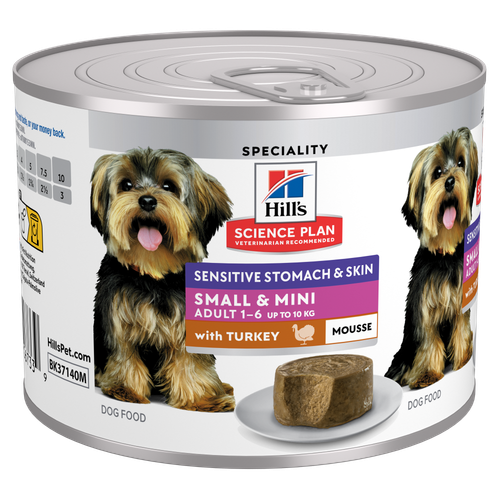
Hill's Science Plan Sensitive Stomach and Skin Small & Mini Adult Dog Food with Turkey is a complete premium pet food for small breed adult dogs aged 1–6 years. This deliciously soft mousse is enriched with ingredients that support digestive health & skin care.

Science Plan Hypoallergenic Medium Adult dog food with Salmon is a gentle, science-led formula crafted for dogs with food sensitivities. Made with carefully selected, high-quality novel proteins and no grains, it’s tailored to minimise common triggers that can lead to skin and digestive discomfort.
Related articles

Discover the causes, signs, and treatments of kidney disease in dogs and find methods of supporting your dog's kidney health. Learn more at Hill's Pet South Africa.
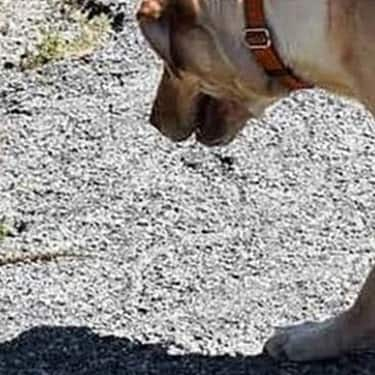
Learn about snake bites on dogs, including clinical symptoms to look for, what to do if you think your dog was bitten, and treatment & prevention options.
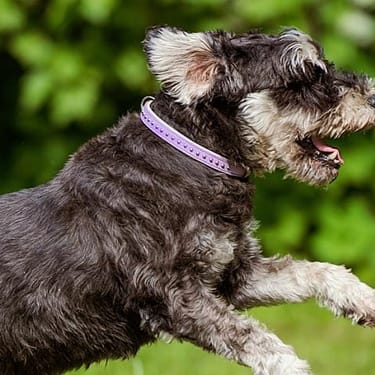
Dog obesity is a significant problem - learn more about helping your dog become trimmer and healthier through improved nutrition.
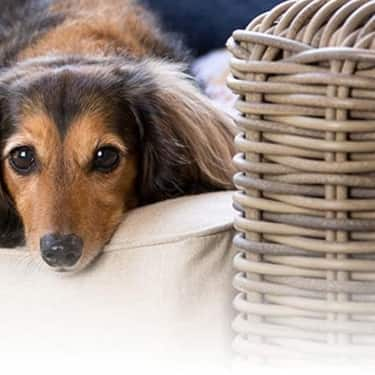
Puppy, kitten and pet dieting, cat nutrition and dog nutrition information from Hill's Pet
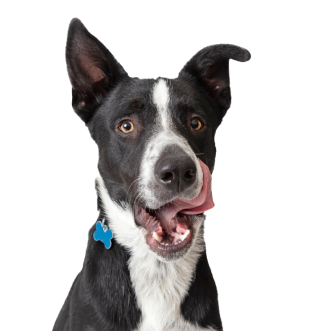
Put your dog on a diet without them knowing
Our low calorie formula helps you control your dog's weight. It's packed with high-quality protein for building lean muscles, and made with purposeful ingredients for a flavorful, nutritious meal. Clinically proven antioxidants, Vitamin C+E, help promote a healthy immune system.
Put your dog on a diet without them knowing
Our low calorie formula helps you control your dog's weight. It's packed with high-quality protein for building lean muscles, and made with purposeful ingredients for a flavorful, nutritious meal. Clinically proven antioxidants, Vitamin C+E, help promote a healthy immune system.

